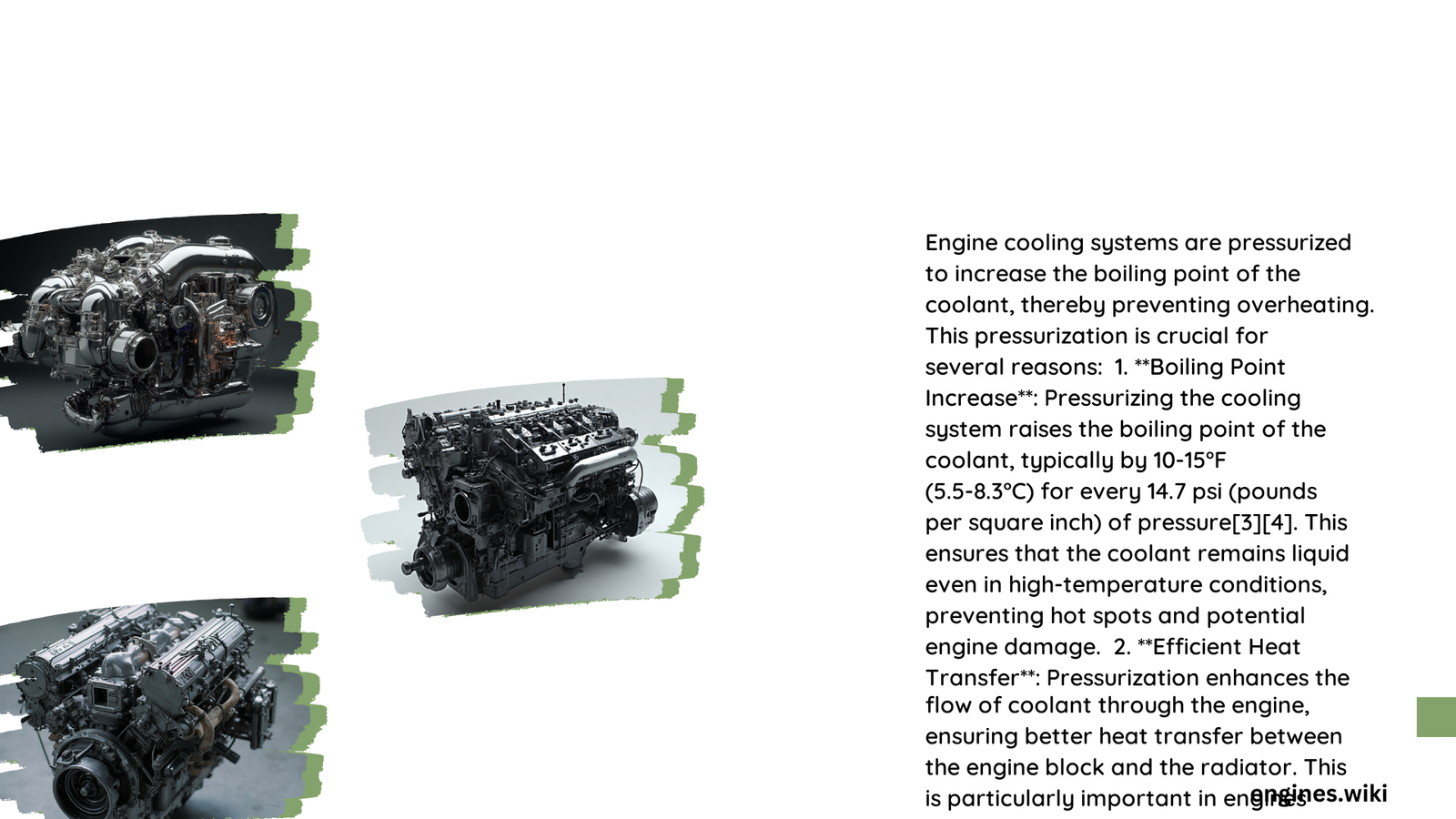Engine cooling systems are pressurized to dramatically enhance thermal performance and prevent potential mechanical failures. By increasing the coolant’s boiling point, managing thermal expansion, and ensuring consistent fluid circulation, pressurized cooling systems protect engines from overheating and maintain optimal operational temperatures across diverse driving conditions.
What Happens When Engine Cooling Systems Are Not Pressurized?
Fundamental Limitations of Unpressurized Cooling Systems
Unpressurized cooling systems face significant challenges that compromise engine performance and longevity:
- Lower Boiling Point: Standard water boils at 212°F (100°C), which is far below typical engine operating temperatures
- Increased Risk of Cavitation: Vapor bubbles form more easily, disrupting coolant flow
- Thermal Inefficiency: Reduced ability to transfer heat effectively from engine components
How Does Pressurization Improve Cooling Performance?

Boiling Point Elevation Mechanism
Pressurization directly impacts coolant thermal characteristics:
| Pressure (PSI) | Boiling Point (°F) | Temperature Increase |
|---|---|---|
| 0 | 212 | Base Temperature |
| 15 | 265 | +53°F |
| 20 | 276 | +64°F |
Key Benefits of Pressurized Cooling Systems
- Enhanced Temperature Tolerance
- Prevents premature boiling
- Maintains consistent coolant state
-
Reduces risk of localized overheating
-
Improved Heat Transfer
- Enables more efficient thermal exchange
- Reduces temperature variations
- Protects critical engine components
What Determines Optimal Cooling System Pressure?
Factors Influencing Pressure Requirements
- Engine Design: Different engines require specific pressure ranges
- Operating Environment: Altitude and ambient temperature impact pressure needs
- Coolant Composition: Water-glycol mixtures respond differently to pressurization
Typical Pressure Ranges for Modern Vehicles
Most automotive cooling systems operate between 13-16 PSI, with some high-performance engines requiring up to 20 PSI.
Why Do Cooling Systems Need Pressure Management Components?
Role of Critical Components
- Radiator Cap: Regulates system pressure
- Expansion Tank: Accommodates coolant volume changes
- Pressure Relief Valve: Prevents over-pressurization
What Risks Emerge from Improper Cooling System Pressure?
Potential Consequences of Pressure Failures
- Engine overheating
- Coolant leaks
- Premature component wear
- Potential catastrophic engine damage
How Often Should Cooling System Pressure Be Checked?
Recommended Maintenance Intervals
- Regular Inspection: Every 30,000 miles
- Pressure Test: Annually or during scheduled maintenance
- Immediate Check: After any cooling system repair
Conclusion: Pressurization as Thermal Engineering
Pressurized cooling systems represent a sophisticated approach to managing engine thermal dynamics. By elevating boiling points, preventing cavitation, and ensuring consistent coolant circulation, these systems are crucial for modern engine reliability and performance.
Pro Tips for Maintaining Cooling System Pressure
- Use high-quality coolant
- Replace radiator cap periodically
- Monitor coolant condition
- Address leaks immediately
Reference:
– SAE International Cooling System Standards
– ASE Automotive Technician Resources
– Society of Automotive Engineers Thermal Management Guidelines
